| Battle of Sohana | |||||||
|---|---|---|---|---|---|---|---|
| Part of First Anglo-Sikh War | |||||||
| |||||||
| Belligerents | |||||||
| | | ||||||
| Commanders and leaders | |||||||
| | Unknown | ||||||
| Strength | |||||||
| 500 | unknown | ||||||
The Battle of Sohana was fought between the Sikh forces led by Akali Hanuman Singh and British forces.
| Battle of Sohana | |||||||
|---|---|---|---|---|---|---|---|
| Part of First Anglo-Sikh War | |||||||
| |||||||
| Belligerents | |||||||
| | | ||||||
| Commanders and leaders | |||||||
| | Unknown | ||||||
| Strength | |||||||
| 500 | unknown | ||||||
The Battle of Sohana was fought between the Sikh forces led by Akali Hanuman Singh and British forces.
In December 1845, Baba Hanuman Singh sent 10,000 soldiers to Battle of Mudki. [1] Hanuman Singh and 500 men of his survived an attack by the British. They were heading for Ghuram and were attacked by the British. [2] Hanuman Singh was wounded and died at Sohana at the age of ninety. [3]
Akali Baba Hanuman Singh was succeeded by Jathedar Baba Parladh Singh. A gurudwara is made for him in the name of Gurudwara Singh Shaheedan. [4] [5]
The following outline is provides an overview of Sikhism, or Sikhi.

The first Anglo-Sikh war was fought between the Sikh Empire and the British East India Company in 1845 and 1846 around the Ferozepur district of Punjab. It resulted in defeat and partial subjugation of the Sikh empire and cession of Jammu & Kashmir as a separate princely state under British suzerainty.
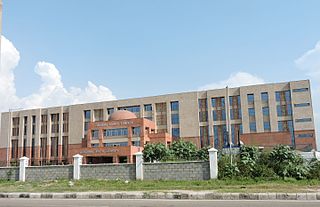
Mohali, officially Sahibzada Ajit Singh Nagar, is a planned city in the Mohali district in Punjab, India, which is an administrative and a commercial hub lying south-west of Chandigarh. It is the headquarters of the Mohali district and one of the six Municipal Corporations of the State. It is officially named after Sahibzada Ajit Singh, the eldest son of Guru Gobind Singh.
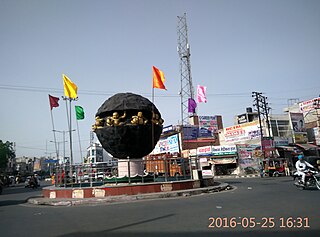
Kaithal is a city and municipal council in the Kaithal district of the Indian state of Haryana. Kaithal was previously a part of Karnal district and later, Kurukshetra district until 1 November 1989, when it became the headquarters of the Kaithal. It shares a border with the Patiala district of state Punjab and the Kurukshetra, Jind and Karnal districts of Haryana. Kaithal district is situated in the North-West of the Haryana state. Its North-West boundaries, which include Guhla-Cheeka are attached to Punjab.

The Nishan Sahib in Sikhism is a triangular flag made of cotton or silk cloth, with a tassel at its end. The current form of the Nishan Sahib that is in use throughout Gurdwaras around the world has an orange (saffron) background color that has the Khanda symbol in the center of the flag. It is commonly hoisted on a tall flagpole outside Gurdwaras.

Fateh Singh, commonly referred to with honorifics as Baba Fateh Singh or Sahibzada Baba Fateh Singh, was the fourth and youngest son of Guru Gobind Singh.

Baba Deep Singh is revered among Sikhs as one of the most hallowed martyrs in Sikhism. He is remembered for his sacrifice and devotion to the teachings of the Sikh Gurus. Baba Deep Singh was the first head of Misl Shaheedan Tarna Dal – an order of the Khalsa military established by Nawab Kapur Singh, the then head of Sharomani Panth Akali Buddha Dal. The Damdami Taksal also state that he was the first head of their order.
Safidon is a city and a municipal committee in Jind district in the Indian state of Haryana.Safidon was anciently known as "Sarp Daman"

Talhan is a village in Jalandhar district, near the Jalandhar Cantonment, in Punjab, India.

A Jatha is an armed body of Sikhs that has existed in Sikh tradition since 1699, the beginning of the Khalsa. A Jatha basically means a group of people.
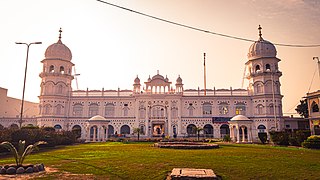
Gurdwara Janam Asthan, also referred to as Gurdwara Nankana Sahib, is a highly revered gurdwara that is situated at the site where the founder of Sikhism, Guru Nanak, was born. The shrine is located in Nankana Sahib, Punjab, Pakistan.

The Shaheedan Misl, also known as the Shahid Misl, was one of twelve Sikh Misls that later became the Sikh Empire. It held a small amount of territory in the Malwa (Punjab) area around the Damdama Sahib before being incorporated into the Sikh Empire of the Sukerchakia Misl by Ranjit Singh.

Akali Phula Singh Nihang was an Akali Nihang Sikh leader. He was a saint soldier of the Khalsa Shaheedan Misl and head of the Budha Dal in the early 19th century. He was also a senior general in the Sikh Khalsa Army and commander of the irregular Nihang of the army. He played a role in uniting Sikh misls in Amritsar. He was not afraid of the British who at many times ordered for his arrest but were not successful. During his later years he served for the Sikh Empire as a direct adviser to Maharaja Ranjit Singh. He remained an army general in many famous Sikh battles up until his martyrdom in the battle of Nowshera. He was admired by the local people and had a great influence over the land and his settlement was always open to help the poor and helpless. He was well known and was a humble unique leader and prestigious warrior with high character. He was also known for his effort to maintain the values of Gurmat and the Khalsa panth.

Baba Hanuman Singh, also known as Akali Hanuman Singh or Amar Shaheed Baba Hanuman Singh, was a Nihang Sikh and was the 7th Jathedar of Budha Dal and Jathedar of Akal Takhat. He was the successor of Akali Phula Singh. He was the first one who fought against the British. He attained martyrdom during a battle with the British and Patiala State in 1846.
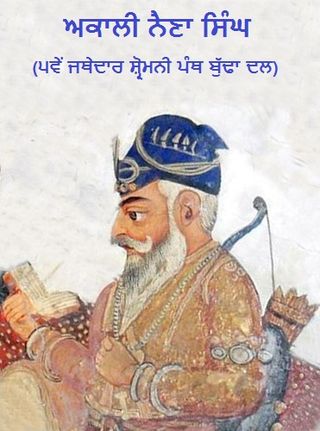
Naina Singh, also known as Narayan Singh, was a Nihang warrior and fifth Jathedar of Budha Dal and a chief of the Shaheedan Misl during the late 18th century.
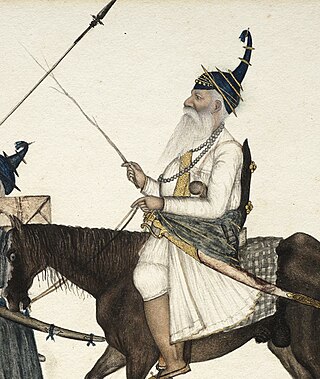
Baba Prahlad Singh was a Nihang Sikh and 8th Jathedar of Shiromani Panth Akali Budha Dal.

The Battle of Amritsar, also known as the Battle of Gohalwar, was fought between the Durrani Empire and Shaheedan Misl of the Dal Khalsa on 11 November 1757. Following the fourth invasion of Ahmad Shah Durrani, his army was attacked by Sikh bands under the command of Ala Singh and Baba Deep Singh. Following the attacks, Ahmad Shah desecrated the Sikh holy site known as the Shri Harmandir Sahib in Amritsar. The news of the desecration reached Baba Deep Singh who vowed to liberate the holy site from the Afghans. This resulted in a pitched battle being fought in the village of Gohalwar, near Amritsar. The battle resulted in Baba Deep Singh being killed and an Afghan victory.
Sardar Chuhar Singh of Jharauli was a general of Shaheedan Misl. He was the paternal cousin of Rai Singh Bhangi and close relative of Sikh warrior Baba Deep Singh. Under the command of Jassa Singh Ahluwalia, he fought for Shaheedan Misl in the Battle of Sirhind (1764) against Mughal Faujdar of Sirhind, Zain Khan Sirhindi. He secured Jharauli, Fatehgarh Atri, Ajrana and seven other villages by Markanda River. He had two sons, Karam Singh and Mohar Singh. The younger Mohar Singh took charge of the Jharauli estate. His elder son Karam Singh took control of the family estate at Chung that was finally incorporated to Lahore Darbar by issueless Ranjit Singh after his death in 1808. Mohar Singh lost seven villages of the Jharauli estate to Bhunga Singh of Thanesar in 1780. The Jharauli estate remained under the Court of Wards during 1885-1893 and again between 1922-1947.
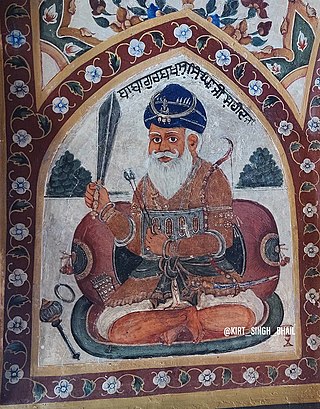
Baba Gurbaksh Singh was a Sikh warrior from the 18th century who served under the Shaheedan Misl of the Sikh confederacy. Gurbaksh Singh along with 29 other Sikh warriors led a last stand against the Afghan and Baloch forces on December 1, 1764, at Amritsar. It was in this skirmish that Baba Gurbaksh Singh along with 29 other Sikhs were killed.
The Battle of Babeli was fought on 1 September 1923 between four Babbar Akalis and the British.